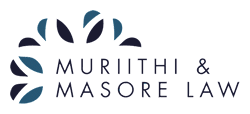A company, as a distinct juristic person, has the right, and is the best-placed plaintiff to sue on a wrong suffered by it. However, there are instances when the wrong suffered is caused and/or left uncorrected, by people who have great control over the company such as directors, majority shareholders or even 3rd parties. In such instances, a person, other than the company itself, may sue the wrongdoer(s). Such cases are known as corporate derivative claims (CDC).
A CDC is a judicial tool available to (former, current or beneficial) shareholders to implead a wrongdoer (either an insider or even a 3rd party) for transgressions meted against the company. It seeks to cushion the company against delinquent acts/omissions of rouge directors so as to promote corporate governance.
Prior to enactment of the Companies Act, 2015 (Act), the courts were largely guided by common law in dealing with CDCs. Plaintiffs had to justify the competence of their CDCs based on extenuating circumstances falling outside the Foss v Harbottle Rule: that the company is the proper plaintiff in its own case. Jurisprudence had crystalized a closed catalogue of exceptions such as: fraudulent behavior by directors, infringement of personal shareholder rights and, albeit ironically, any other reasons.
However, the enactment of the Act ushered an epoch of exclusive statutory regulation of CDCs. It is 3-pronged:
The first prong is: Locus standi. It is only available to a person connected to the company by being a (beneficial, current or former) shareholder.
Next, the litigant has to seek the court’s permission to continue the CDC.
Finally, the reliefs being sought must be justiciable reliefs. In so doing, the litigant must demonstrate entitlement to lenient exercise of judicial discretion. Exercise of the court’s discretion is guided by the following principles:
At the top of the totem pole is that the litigant must be acting in the best interest of the company. One must demonstrate that the relief(s) sought are consistent with the objects of the company. The reliefs sought must also promote the greatest good for the greatest number of shareholders. A CDC, the court must then satisfy itself, should not be used as a smoke screen by the litigant to pursue a personal claim.
Dovetailing from the foregoing is that the litigant must demonstrate that the CDC is brought in good faith. The standard is that of a faithful director(s) in furtherance of his/her/their fiduciary duty.
Next, the nature of the wrongdoing must be considered. It must be sufficiently particularized to create a reasonable doubt that there is breach of their fiduciary duty by the director(s), either by act or omission, in causing or failing to remedy the wrong;
Penultimate, the litigant must either exhaust or have compelling reasons to be excused from exhausting alternative remedies, if any, prior to filing a CDC; and
Finally, the cause of action must not be one in which the litigant could have instituted as a direct suit. For example, and contrary to the defunct common law regulation of CDCs, a shareholder ought to sue the company directly, but not vide a CDC, to protect himself/herself/themselves (and other shareholders) from oppressive conduct and unfair prejudice by the company.
Exclusive statutory regulation of CDCs in Kenya is fairly nascent and has been barely spared of teething problems. The courts are grappling with the following issues:
First, does the litigant have to file a written application for permission to continue a CDC or could it be done orally in court?
Second, is the permission sought before, contemporaneously or after filing the CDC?
Third, are proceedings for seeking permission to continue CDCs heard ex-parte or must all parties be heard?
Finally, how is the company supposed to be joined to the CDC: is it as a Defendant as held in Joe v Rain & Sunrise v Lectany; is it Plaintiff as was in Ghelani v Elesh; is it Affected Party as was in Wilmot v Patrick; is it Interested Party as was in Yusuf v Hussein or is it enough to merely plead that the litigants are suing on behalf of the company without joining the company as a party to the suit as was the case in Isiah v Muturi?
Justice J.L. Onguto refers to CDCs as “the pillars of corporate litigation.” It will be akin to invoking the Sampson Option by the courts if the law on CDCs is not settled sooner rather than later.


